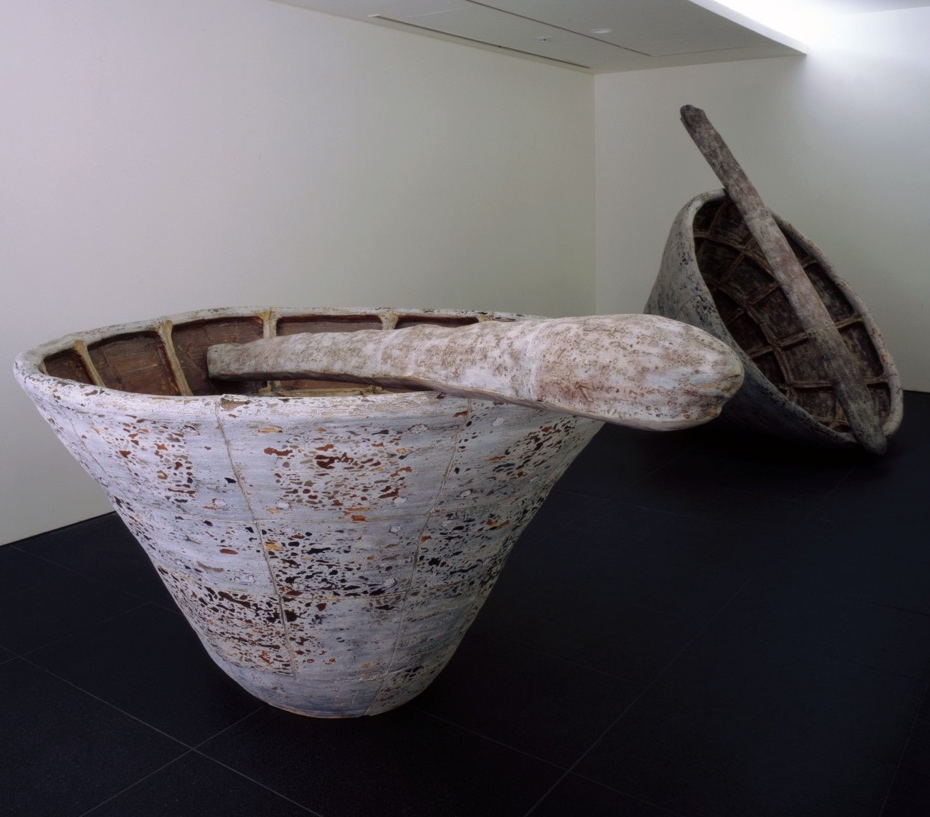The Shape of Clay
The classroom was located on the lowest floor, on the outskirts of the school building. To be honest, I remember walking down the stairs feeling a bit out of sorts. The task at hand was “drawing,” and at the time it felt like a never-ending labor that weighed heavily on me. I descended the stairs as if to escape this internal conflict, and at the bottom waiting for me was the potter’s wheel.
It was nothing if not an accident that I discovered the world of ceramics, but it was a very fortunate one. Shapes emerged from my hands as the wheel turned and I marveled as they came into existence right before my eyes. When I use the potter’s wheel, I feel the pure pleasure of creation, and for me, this is my foundation.
On that day, I began using the potter’s wheel to create work in a style that lasted several years. For a good while, I just assumed that the art of ceramics was essentially to make vessels. Looking back now, I realize that I never aspired to create pots. What I wanted to create were clay shapes erected on a potter’s wheel, forms that merely borrowed their inspiration from pots. Naturally, soon the notion of making “my own creations” started to rear its head.
I often found a crack or a flaw in bowls that I thought had been made made well. I couldn’t do anything about this as I was limited by the scope of my still-immature skills, but the disappointment I felt at failure was as profound as the hopes I had to produce good results. While I stared at the cracked pieces piled up in the corner of my studio, I was struck by the smooth surfaces made by turns of the wheel and the sharp angles of the cracked sections. Within those pieces coexisted both forms that I created with my own hands and forms that would be impossible to create of my own volition.
With a touch of mischief, I put these pieces together, layering them or inserting them one into another. Thus began my series of work that found its birthplace on the potter’s wheel, building with thrown and altered pieces.
While doing this line of work, I realized that I had come to see pieces of clay shaped on the wheel as raw materials. Like other processed materials, such as plywood, granite or cor-ten steel, I prepare concentric clay shapes with my own hands. This extra step is necessary because clay can take any shape; that is, it doesn’t have any innate form. The potter’s wheel is the conduit to make this enigmatic material my own. It provides a methodical way to give a definitive shape to clay.
Once I was able to think objectively about the relationship between clay and the potter’s wheel, I discovered another important point. Thus far I have described clay as a material, but this is not the only material I have at my disposal. I can use ceramic, that is, objects fired and hardened, objects that are shaped, processed, surface-treated, highly heated and settled, objects including this whole process, as raw materials.
In the process of selecting and combining clay parts, there is always a hidden force that informs my decisions. Determining the shapes, giving color to these shapes and then accepting the end results that come out of a kiln; there are only small windows of opportunity for my will to exert itself throughout this process. If I were to speak without fear of being misinterpreted, I would say the creation of ceramics is an extremely materialistic act. That is to say, you cannot be successful at this art form without complete devotion to the object.
Through this body of work, I wanted to reexamine my relationship with objects, a relationship that was first realized in front of the potter’s wheel. It is an attempt to seek answers to the following: Will I be able to truly make clay my own without using the potter’s wheel I have some to rely on? Will I draw the clay to me, or bring myself to clay? What will be revealed when I strip the elements to a minimum, to combine shapes that emerged from my bare hands? What can be expressed in a controlled surface?
By the time this exhibition comes to an end, I’m am quite certain that I will be able to see results that will somehow lead to my next body of work. I hope my work can somehow capture even a fraction of the possibilities of creation in the world of tangible objects.
August 1995 Solo exhibition leaflet, Gallery Koyanagi

